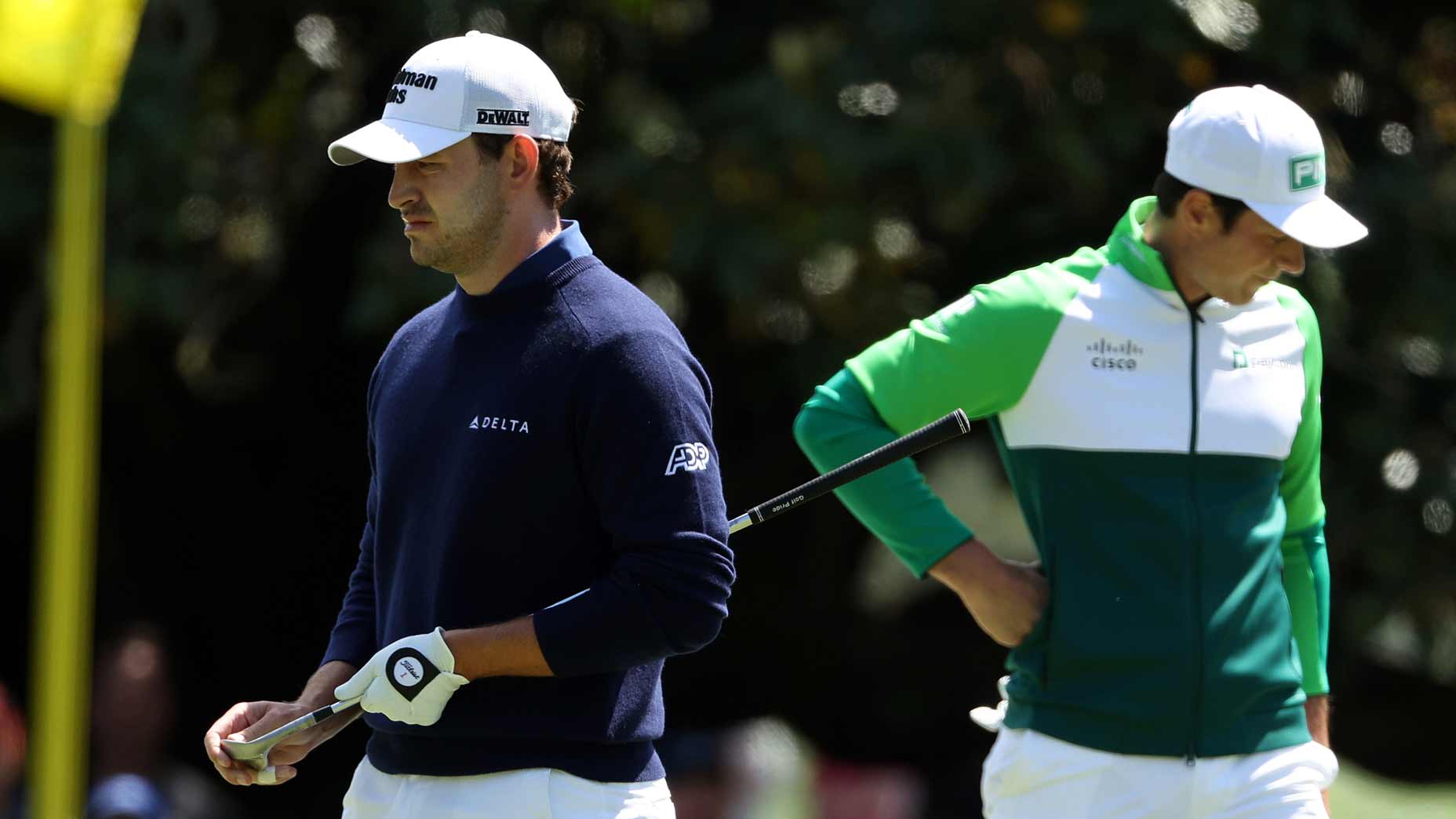From the PGA Tour to your local muni, slow play is always a big conversation topic, but recently the debate has heated up after high-profile incidents of glacial pace of play on Tour.
Now, the president of the American Junior Golf Association’s board of directors is jumping into the fray, identifying a “culprit” as well as a solution for the current slow-play plague.
In a missive published Tuesday on Global Golf Post, Jim Nugent — who in addition to his AJGA role is the founder and publisher of GGP — said that though he was “hardly objective in the situation,” the junior golf league has already discovered the road map to improved pace of play in tournament golf, and it’s one that the pro tours would be wise to follow.
Nugent explained that a series of pace-of-play initiatives initiated by the AJGA in 2003 have been impactful. According to Nugent, over the past 10 years the average time for a threesome to finish a round in AJGA tournaments has been “four hours and 23 minutes.”
Rounds on the PGA Tour typically take much longer. At this year’s Masters, the pace of the second-to-last pairing on Sunday, featuring Patrick Cantlay and Viktor Hovland, received heavy criticism. Brooks Koepka, who played behind them in the final group with Jon Rahm, publicly laid blame at their feet following the tournament.
“Yeah, the group in front of us was brutally slow,” Koepka said. “Jon [Rahm] went to the bathroom like seven times during the round, and we were still waiting.”
Ultimately, Cantlay and Hovland are estimated to have completed their final round at Augusta in four hours and 45 minutes, but that’s as a twosome. PGA Tour rounds featuring threesomes sometimes extend past the five-hour mark.
In an interview with Jamie Weir of Sky Sports last week, RBC Heritage champion Matt Fitzpatrick also sounded off on the state of slow play on Tour and suggested a target time for threesomes.
“If you’re in a three-ball, in my opinion you should be [playing a] round in four hours, four-and-a-half absolute maximum — it’s a disgrace to get anywhere near that,” Fitzpatrick told Sky Sports. “You’re talking [five hours, 15 minutes], five-and-a-half hours at some venues and it’s truly appalling.”
But if junior golfers are so successful at keeping a swift pace in tournaments, why do many of them slow down so significantly by the time they get on Tour?
Nugent provided a theory for that, too. He lays the blame on college golf.
“Those looking for a culprit for slow play on the PGA Tour should focus not on youngsters but on the college game,” Nugent wrote. “I have said for years, only partly in jest, that the AJGA players who go on to play at the NCAA Division I level must spend the first two weeks on campus being deprogrammed, to become comfortable with six-hour rounds of golf. Everything the AJGA has taught these kids gets shunned aside quickly.”
Nugent added, “It’s no wonder that so many players come to the PGA Tour expecting to play slowly.”
So how does the AJGA keep play moving? Nugent explains that at AJGA events, of which there will be 130 in 2023 alone, players “are expected to play ready golf and walk with purpose between shots.” Once a player holes out, it’s on to the next hole whether or not your playing partners have finished. If another player is searching for their ball or dealing with a complicated ruling, you play on anyway.
But accountability is essential for this system to work, something that critics believe is lacking on Tour. The AJGA uses a colored card system. At six checkpoints spread out across the course, players are shown a green card if their pace is sufficient, a red card as a warning to let them know they are falling behind and lastly, if their pace doesn’t improve, a double red card which results in a one-stroke penalty.
Nugent said that in 2022, 3,689 red cards were doled out, but only eight competitors received double red cards.
For its part, the PGA Tour instituted new pace-of-play regulations in 2020, which include an “Observation List” of players who have averaged longer than 45 seconds per shot over their past 10 tournaments.
Players on the Observation List (approximately 20-25) are notified before tournament play and must make strokes within 60 seconds for every shot throughout that tournament. If they are observed failing to do so, they will be timed individually by a rules official. Eventually, if a player under observation records two bad times in a round, he will be assessed a one-stroke penalty.
However, as with many PGA Tour punishments and in clear contrast to the AJGA, the Observation List and slow-play fines on the PGA Tour are not released publicly, and it seems they are enforced less stringently than on the AJGA. Not a single player has been hit with a stroke penalty since the new policy was instituted.
